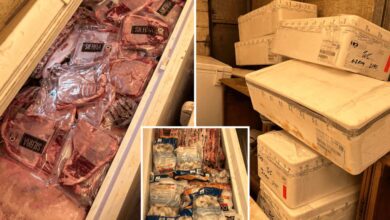MTA greenlights whopping $1.9B contract for long-awaited Second Avenue subway — and transit officials still claim it’s a savings

The money train never stops.
The MTA awarded a nearly $2 billion contract on Monday for the long-promised Second Avenue Subway’s next phase — a colossal payout that transit officials claimed was a solid investment even as the existing system crumbles.
The transit agency’s honcho Janno Lieber when asked by The Post why the Metropolitan Transportation Authority was building a new subway line instead of repairing broken trains and tunnels huffily said both were being done.
“I reject the premise of the question,” Lieber said. “The MTA capital program has both state of good repair and expansion elements.
“Big number, damn good investment,” he said about the whopping, $1.9 billion new contract.
The deal approved during the special MTA board meeting went to Connect Plus Partners — a joint venture of Halmar International and FCC Construction — to dig a tunnel from 116th Street to 125th Street and begin construction on two new East Harlem subway stations.
Early street work is expected to begin late this year, with heavy civil construction and tunnel boring to follow in 2026 and 2027, respectively.
The vote marked a major step forward for the MTA’s $7.7 billion Phase Two of the Second Avenue subway project — which helps fulfill the century-old dream of extending a train line up the East Side of Manhattan.
“The time of promises are over,” Gov. Kathy Hochul said. “We are moving down the tracks as quickly as we can.”
Phase One — which added three stops on the Q line between 63rd Street to 96th Street — cost $4.45 billion when construction ended in 2017 after a full decade of work.
The $7.7 billion second step will expand the Q line 1.5 miles north with three new stations expected to open by 2032.
It will cost an eye-watering $4 billion per mile — making it one of the costliest subway builds on the planet.
Still, Lieber defended the new phase’s sky-high expected cost, arguing it was actually cheap on a per-rider basis — with 110,000 expected daily passengers, officials said.
“This project, not only is it design-build, but it is on par price-wise with international major tunneling projects, and it is by, by far the lowest cost per rider of any heavy rail project in the United States,” Lieber contended.
MTA officials did tout some expected savings, although they appeared modest compared to the eight-figure price tag.
Crews will use a 1970s-built tunnel along the route for a future 116th Street subway station — a step officials contended would save the MTA $500 million.
Jamie Torres-Springer, president of MTA Construction & Development, said the agency will also save $100 million by using smaller tunnel crews.
“This project as a whole is on time and under budget,” Torres-Springer said of Phase Two so far.
Renderings released by the MTA showed the vision for a 125th Street station, for which crews will excavate a space.
The futuristic planned station will have an airy feel, with a largely glass façade letting in natural light a Park Avenue entrance, the renderings show.
Other renderings show a planned entrance for a 106th Street station, the third of Phase Two’s planned stops.
A contract for 106th Street station will be awarded separately.
Credit to Nypost AND Peoples



